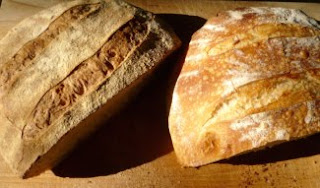
My son is addicted to Yoplait. It's a yogurt-like substance. I serve it as part of a balanced breakfast, though I can no longer bear to lick the spoon after I've disgorged it from its plastic tomb.
Our son did not arrive at our home at birth so we were unable to raise him with a taste for real food. I don't know if we would have raised him thus anyway as my commitment to proper food waxes and wanes, often sidelined by a drive through local Filipino and Thai neighborhoods, scented as they are with intoxicating barbecue. Still, every morning as I ply the Yo-paste from its white ty-d-cup I sigh. Then I scoop kibble from a colorful box for the boy, followed with a scoop of kibble from a bucket for the cats. I'm feeding my boy as if he were factory farmed.
The food preferred by the boy is sweetened, yes, but it is also predigested. It is meant to dissolve like cotton candy in the mouth requiring no effort from the teeth or jaws, no thought that leads the imagination to the cow or goat and to the land that sustains them and us.
This morning I created version 2.0 of faux-plait. I took Trader Joe's Greek yogurt - cuisinarted in 4 frozen strawberries, 1/8 cup of sugar, and vanilla. It tastes better than Yoplait, but there is that sour aftertaste which I fear will derail the experiment. It still actually tastes like yogurt.
I'm convinced that industrial food is meant to distance us from real food to the extent that we will no longer be satisfied with real food. We will not look to the earth or our animals for sustenance, but to groups of pathologically greedy men seeking to sell us pre-eaten food disguised with sugar, covered in lard, and injected with vitamins and the hot nutrient
du jour. If we balk, they'll throw in a toy.
Everyone who cannot feed herself or himself will be at the mercy of the pathologically greedy men. They are invisible, hiding behind the fiction of the corporation. Our food - which once represented our covenant with the earth - is mystified. No one knows where Yoplait comes from - it's magic. Don't question the system or it might all go away. Just be grateful.
Epilogue: The boy likes the faux-plait. Now I'll slowly wean him off the sugar in it.






























